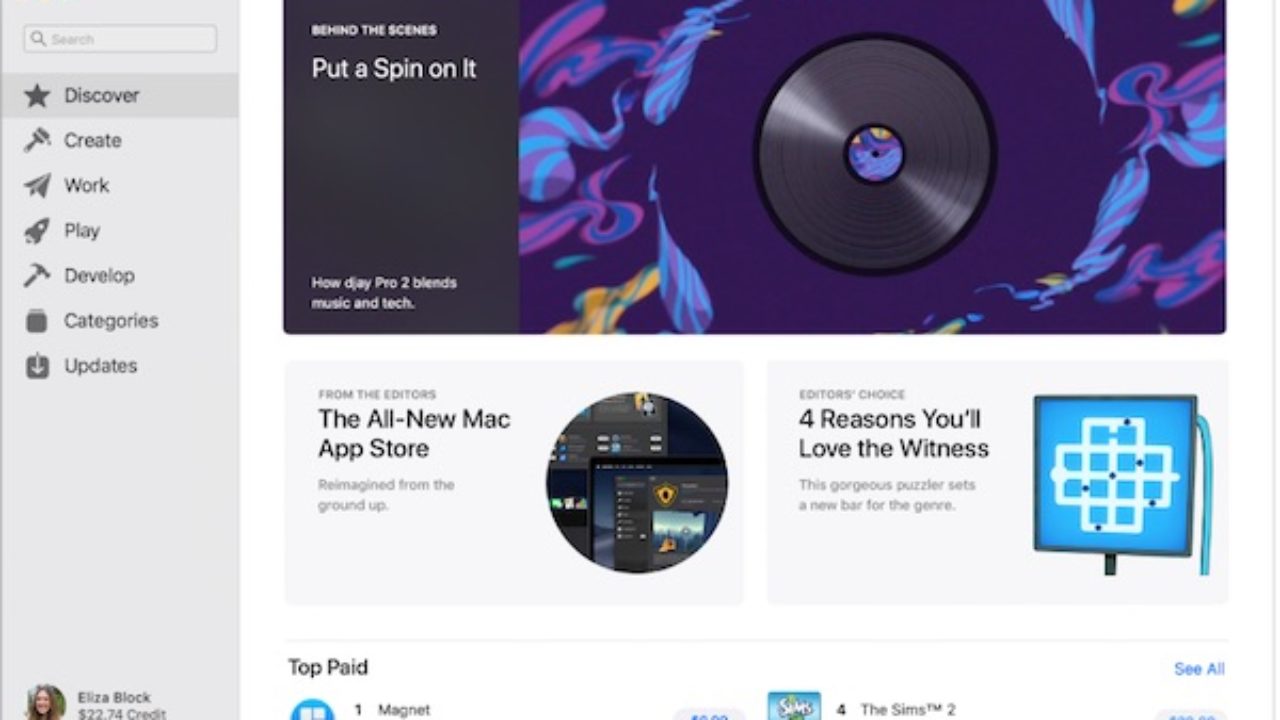High Sierra Not In App Store
Good suggestion by Dah.veed, look for Install macOS High Sierra.app, also before going ahead with the install make a copy of the app on an external disk or USB stick, handy to have a copy as the one in your Applications folder will be deleted when the installation completes.
- Download High Sierra from the App Store. (Optional) Remove the new partition and reclaim the free space.
- Keynote 8.2 update and other iWork apps still support macOS High Sierra (and presumably previous macOS versions as well). It's only Continuity Camera feature included in that update, that requires Mojave or iOS 12. I thought that macOS High Sierra might not be supported by this update as the Update button acted as no-op, even after my first reboot.
- Following the release of macOS High Sierra, Mac users have discovered that Apple is no longer listing previous operating system updates in a user's Purchased tab in the Mac App Store.
- Your Mac might not connect to the App Store for a number of reasons. What to Do If Your Mac Cannot Connect to the App Store. Work through the steps below to fix your Mac when a blank screen says “Cannot Connect to App Store.” Be sure to test the App Store again after each step; we’ve listed them in order of most to least likely to help.
It seems that in releasing Big Sur, Apple has somehow broken its code-signing service for High Sierra apps acquired through the App Store. There’s a comprehensive discussion here: https://discussions.apple.com/thread/252037712?answerId=253880193022&login=true&page=1
I fell into this hole yesterday when I upgraded my wife’s iMac 12,2 (mid 2011) from El Capitan (10.11) to High Sierra (10.13), the final version that the model will run, so that I could install MS Office 2019 for her. The net result is that any program that needs to be updated through the App Store to run under High Sierra, such as Pages, Keynote and Microsoft Remote Desktop, fails to run and quits with a “code signature invalid” error.
The contributors to the above thread have determined that the fault lies at Apple’s end, in the software that validates new software installations. So far Apple has not acknowledged the fault. If it doesn’t resolve it, many people who can’t upgrade beyond High Sierra are going to have to downgrade (if possible) or buy new Macs.
Some Mac users have reported technical issues once they update their OS to the High Sierra Update. To be precise, their App Store feature is not working as it should or at least, as it did before the update. Usually when an app releases its update, it is directly indicated in the App Store, but in this case, you get the update and when you proceed to download it, you get a pop-up showing “No Update Available”. Sometimes, the main culprit could be a ghost update.
Mac OS 10.13 High Sierra Update Features
Apple has wowed its loyal subject, once again, by introducing a new OS update. Beyond the newly enforced automatic security checks on EFI firmware being done each week, this new OS update, the macOS 10.13 High Sierra, comes with cool new features. They include:
High Sierra Not In App Store Free
Improvements to the Safari Browser – Imagine a browser that stops ad-tracking and auto-playing video media and a broader Spotlight Search in the Mail App. Moreover, when composing emails, the Mail App allows split viewing of the screen and uses over 30% less disk space.
The Photos app has not been left behind in the macOS 10.13 High Sierra update. It has been imbued upon, better sorting tool to boot, accompanied by a new themes courtesy neural networks, and improved Apple devices syncing. Editing in the photos App have been improved as well, the user now has an easier time enhancing the quality of their photos and applying filters without being adept in Photoshop.

One of the major changes is the file system, Mac has ditched the 30-year old HFS, for the new and improved Apple File System (APFS). APFS supports native encryption and fast metadata operations. It is also a 64-bit file system, that makes your Mac run faster, be more secure and transparent. Apple has also announced that they will discontinue most of Mac’s 32-bit apps in the later macOS High Sierra versions.
The High Sierra update also brings HEVC (H.265) video compression to the Mac, enabling video files compression that streams at higher resolutions. Furthermore, with any Mac that can run the new OS and with a dedicated graphics card installed through Thunderbolt 3, you have the opportunity to immerse yourself in Virtual Reality.
What to Do when High Sierra Update Notification is not Showing on Mac App Store?
Your update may not be showing possibly due to old cache files mishandled during the upgrade and this is an easy problem to fix.
1Shut Down and Restart Your MacBook
This is often the first action to any issues with an Apple device. Before attempting any troubleshooting protocols or tech mysticism, it is recommended that you shut down the system first. Wait a few minutes and reboot the system. It is possible that the increased load to the processor immediately after the update may trigger its misbehavior. Once you restart your machine, the App Store will start recognizing the apps that need updating and those that are up to date.
Remember, do not restart the system, shut it down and give your processor and OS a fresh start.
2Change App Store Settings
If restarting your Mac doesn’t work, your next recourse should be the App Store Settings. You’ll have to change some of them and try to solve the issue.
The first stage is to launch “System Preference” and from there, open “App Store”. On the “automatically check for updates” option, toggle it on as well as all the options therein.
Your system will then begin searching actively for any app updated including the system updates and they will also be downloaded and installed automatically, as soon as you turn all these options on.
You can also check the “app is updated automatically”, and close the App Store app and re-launch it after a few seconds. It will display the message: “Mac app store says no updates available”.
Click on Check Now after a few minutes and do either of the following to see if this fix has worked or not.
- Check internet connection.
- Check App Store Purchases.
If you have unwillingly logged out from the App Store with your apple id, no new updates will be installed on your Mac. However, you can still log in to your system with your login credentials and proceed normally with the updates.
3Check Update with Terminal – Force Update

Using Terminal should be the last resort and shouldn’t be attempted carelessly. Always use precaution when working with Terminal. Ensure you have administrator privileges, i.e., admin passwords to effectively execute commands. To check update with the terminal is also considered a force update and should be done in the following way:
From the terminal, execute the following command “sudo softwareupdate –ia”. A message “Finding Available Software”, will be displayed once you execute the command. All the updates should appear on the screen and to install them, type the following command “Sudo softwareupdate – -install – -all”.
If your system is still unresponsive, one last course of action should be typing the command “defaults read com.apple.appstore” and execute it. This command should unmask the issue behind update not showing in App Store.
4Clean Cache of App Store with Finder
Now for this fix, we’ll employ the use of ‘Finder’. Launch Finder and simultaneously press command + shift + G keys.
Alternatively, you can open “Go Menu” and select “Go to Folder”. Then type the following command '~/Library/Caches/'. Go to the filename “com.apple.appstore” and delete it from the folder.
Go back to the top and open 'Go Menu' > 'Go to Folder' but this time, type /private/var/folders and locate “com.apple.appstore” in all the folders and subfolders, then delete it.
Restart your Mac, and hopefully, the issue will be resolved.
Summary
High Sierra Not In App Store Windows 7
The MacOS High Sierra is an update for the Apple Macintosh, and it boasts incredible new features as well as boosting the overall processor speed of your machine. The update itself is not lacking in issues that the Mac community have experienced and created forums on. In this article, there are four ways to troubleshoot “Update not showing on App Store” highlighted for you to exploit. The terminal fix is to be left for advanced users and shouldn’t be trifled with.

